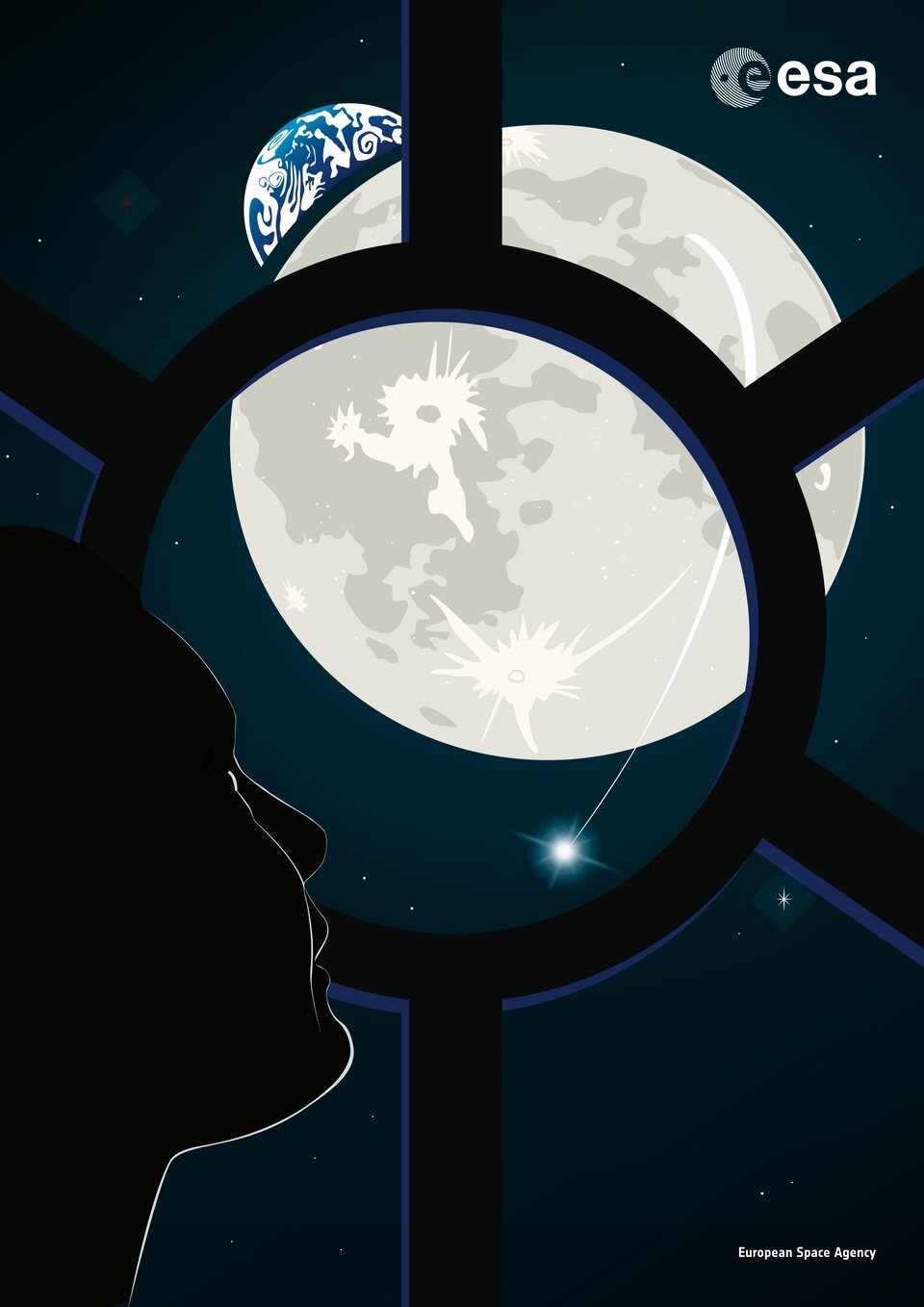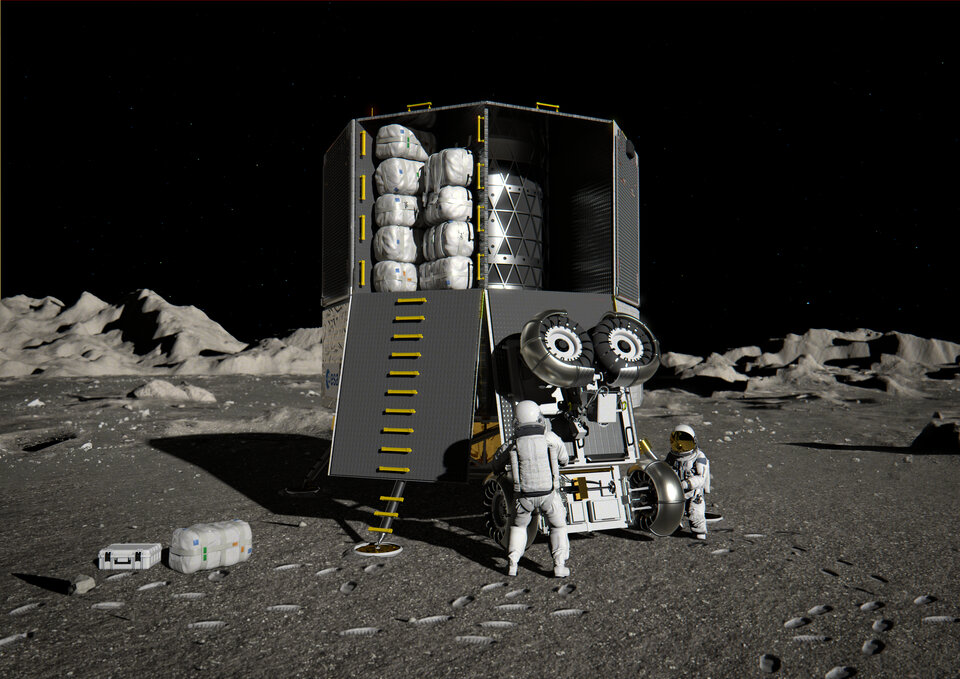Global S&T Development Trend Analysis Platform of Resources and Environment
| A new decade of European exploration | |
| admin | |
| 2020-10-13 | |
| 发布年 | 2020 |
| 语种 | 英语 |
| 国家 | 欧洲 |
| 领域 | 地球科学 |
| 正文(英文) | This year’s International Astronautical Congress will be visiting virtually the sites where Europe’s exploration of our Solar System for the 2020s is beginning. Join the free live event on 14 October that will showcase the hardware and the people that are taking Europe to the Moon and Mars and back. 
The event will be hosted by ESA Director General Jan Wörner with NASA administrator Jim Bridenstine joining the panel to discuss European contributions to, and ambitions for, human and robotic exploration, detailing ESA’s three destinations – International Space Station, Moon and Mars. The web-event will go live to sites where young professionals will introduce the projects and the people that are delivering hardware, based on recently-signed contracts. A tour of Airbus Defence and Space in the UK will visit the ‘Mars Yard’ where they are building rovers for the Red Planet. Next, a visit to Thales Alenia Space in Turin, Italy, where they are developing Gateway modules that will house astronauts as they orbit the Moon. Surrey Satellite Technology Limited, in the UK will end the tour by introducing its Lunar Pathfinder satellite to offer telecommunications around the Moon in a commercial partnership with ESA. Lastly, we will return to Italy, in Milan, where Leonardo designs and develops robots to explore the Moon and Mars. How to watchYou can watch the panel talk via following link https://iac2020.vfairs.com on Wednesday 14 October 2020 from 16:30 until 17:10 CEST. The panel talk will also be streamed on ESA Web TV. Explore farther
Europe is building the hardware for the new frontier, exploring farther. By signing contracts with industry, ESA is securing work in Europe and the continuation of our exploration programme for Moon and Mars missions. “We are going, together. As humankind has proven itself close to home with the International Space Station, now is the time to reach out and explore farther, to the Moon and Mars,” says David Parker, ESA’s director of Human and Robotic Exploration, “All the knowledge we gain from our endeavours are for Earth and humankind, while all the investments made are spent creating jobs and know-how at home." Investment in Europe
ESA Member States showed a strong commitment to the European exploration programme at Space19+ in Seville with a 30% increase in annual investment allowing ESA to fulfil its strategy of exploring our Solar System with humans and robots. The commitment has allowed ESA to issue many contracts to start designing and building the next-generation hardware that will allow us to explore farther and return new knowledge. The live tour and discussion will showcase ESA’s exploration strategy for the next decade and kicks off the work done by the young professionals working on the projects. International Space Station operations for European elements will continue under a contract with Airbus, ensuring astronauts can conduct science with smooth operation of the life-support systems, power supply, flight control systems, laboratory equipment and experimental payloads in the European Columbus module. Farther afield, on the Moon, ESA is signing contracts with Airbus to kickoff a multi-mission lunar transport lander called European Large Logistics Lander, or EL3 for short. Leonardo is building the miniature laboratory that will be part of Roscosmos’ lunar lander Luna-27. ESA signed a contract with Airbus to build the third European Service Module for NASA’s Orion spacecraft that will ferry the next astronauts to land on the Moon by 2024 – with more modules to come. Orbiting the Moon will see the Gateway to be used as refuge for Artemis astronauts on lunar missions. ESA has committed to two modules for communications, refuelling and habitation that will be built Thales Alenia Space in Italy and in France. 
Mars exploration is marked by the international Mars Sample Return campaign that will see five launches, including one from the Red Planet to bring samples to Earth for analysis in world-class laboratories. Airbus in the UK will be developing a Sample Fetch Rover to collect the martian sample containers on the planet’s surface and bring them to NASA’s rocket for launch into Mars orbit. Airbus in France will be developing and building the spacecraft to rendezvous with the samples and fly them to Earth. |
| URL | 查看原文 |
| 来源平台 | European Space Agency |
| 文献类型 | 新闻 |
| 条目标识符 | http://119.78.100.173/C666/handle/2XK7JSWQ/298453 |
| 专题 | 地球科学 |
| 推荐引用方式 GB/T 7714 | admin. A new decade of European exploration. 2020. |
| 条目包含的文件 | 条目无相关文件。 | |||||
| 个性服务 |
| 推荐该条目 |
| 保存到收藏夹 |
| 查看访问统计 |
| 导出为Endnote文件 |
| 谷歌学术 |
| 谷歌学术中相似的文章 |
| [admin]的文章 |
| 百度学术 |
| 百度学术中相似的文章 |
| [admin]的文章 |
| 必应学术 |
| 必应学术中相似的文章 |
| [admin]的文章 |
| 相关权益政策 |
| 暂无数据 |
| 收藏/分享 |
除非特别说明,本系统中所有内容都受版权保护,并保留所有权利。
修改评论